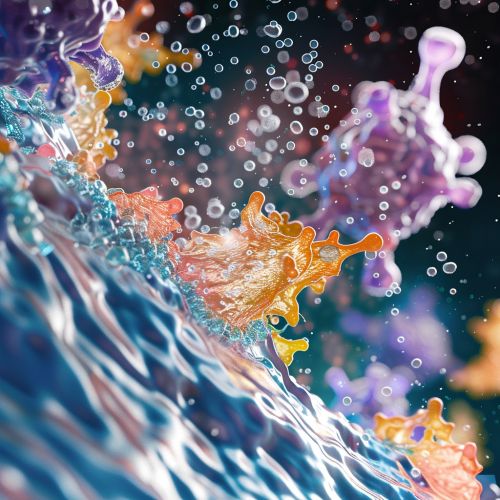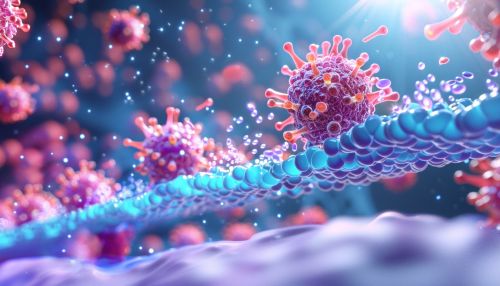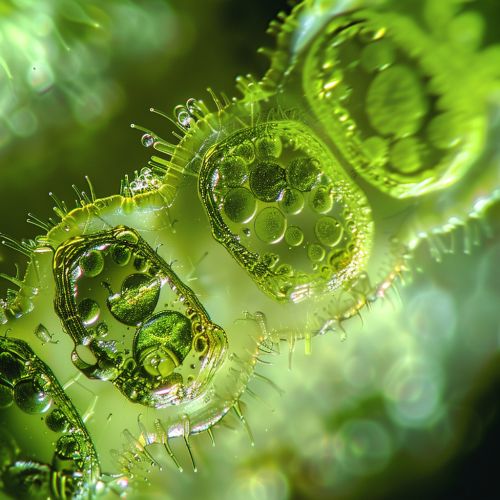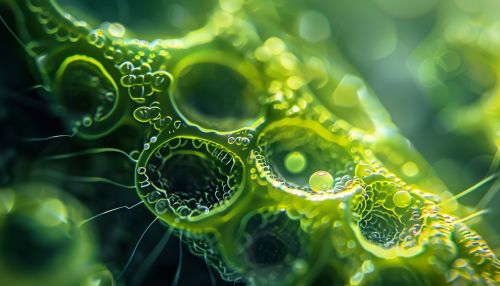Chemiosmosis
Overview
Chemiosmosis is a fundamental process in cell biology that involves the movement of ions across a selectively permeable membrane, down their electrochemical gradient. This process is essential in the production of adenosine triphosphate (ATP), the primary energy currency of the cell.


Chemiosmotic Theory
The chemiosmotic theory, proposed by Peter D. Mitchell in 1961, describes how ATP is produced in the cell through a process called oxidative phosphorylation. According to this theory, the energy derived from the electron transport chain is used to pump protons (H+) across the inner mitochondrial membrane, from the matrix to the intermembrane space. This creates a proton gradient, or a difference in proton concentration across the membrane. The protons then flow back into the matrix through an enzyme complex called ATP synthase, driving the synthesis of ATP from adenosine diphosphate (ADP) and inorganic phosphate (Pi).
Mechanism of Chemiosmosis
Chemiosmosis involves several key steps:
- The electron transport chain in the inner mitochondrial membrane transfers electrons from electron donors to electron acceptors via redox reactions. This process releases energy.
- The energy is used to pump protons from the mitochondrial matrix to the intermembrane space, creating a proton gradient.
- The protons flow back into the matrix through ATP synthase, a process called proton motive force.
- The flow of protons drives the phosphorylation of ADP to ATP.
Role in Photosynthesis
Chemiosmosis also plays a crucial role in photosynthesis, the process by which plants, algae, and some bacteria convert light energy into chemical energy. In the thylakoid membranes of chloroplasts, light energy is used to pump protons from the stroma into the thylakoid space, creating a proton gradient. The protons then flow back into the stroma through ATP synthase, driving the synthesis of ATP. This process is known as photophosphorylation.


Applications and Implications
Understanding the process of chemiosmosis has important implications in various fields of biology and medicine. For instance, many antibiotics and pesticides work by disrupting the proton gradient in bacteria and pests, thereby inhibiting ATP production and killing the organisms. Moreover, defects in the chemiosmotic process can lead to various human diseases, such as mitochondrial disorders and neurodegenerative diseases.
